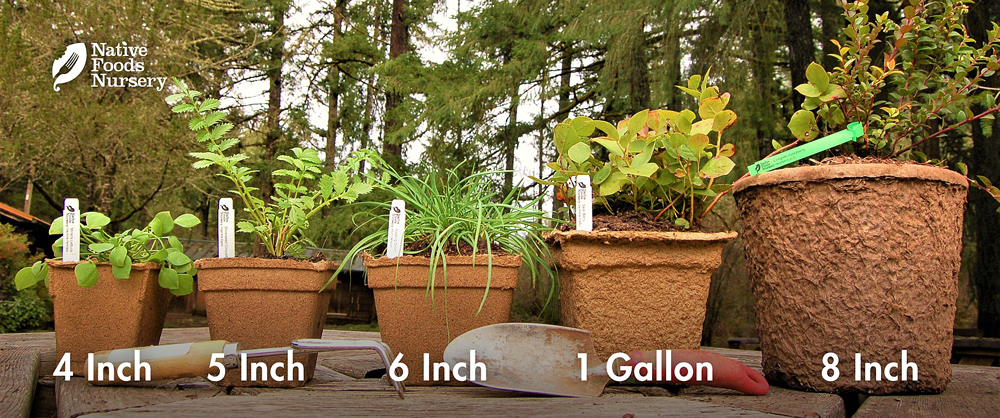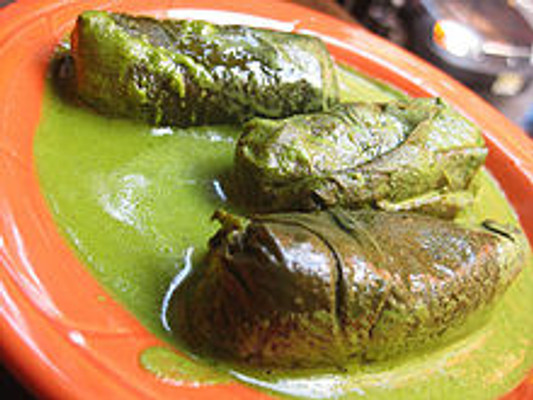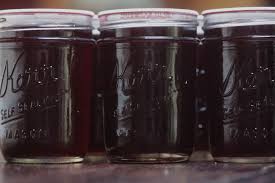Wild Grapes - California and Desert
- Current Stock:
- 0
- Other Names:
- Pacific Grape, Western Wild Grape (californica) Desert Grape, Coyote Grape (girdiana)
- Latin Name:
- Vitis californica and girdiana
Two of the West’s most charismatic vines, Vitis californica and Vitis girdiana bring beauty, abundance, and biodiversity wherever they grow. From riversides in northern CA and southern OR to desert canyons in the south, these wild grapes spill over arbors and fences with fragrant blossoms, juicy-tart fruit, and a blaze of autumn color—feeding both people and the land.
Note: V. girdiana will be available Fall of 2026. (Pollination note: Flowers are functionally unisexual—plant multiple vines for reliable fruit set.) [8]
Edible Uses
The fruit—juicy, yet tart and seedy—can be eaten fresh, dried into raisins, or cooked into jam, jelly, or syrup [1]. Some homebrewers even turn them into wines! The young leaves are also edible: tender and tangy when steamed or blanched, they make traditional vegetable wraps (dolmas) or can be added to pickling brine for their crisping qualities. Southern cousin V. girdiana produces darker, smaller fruit adapted to hotter, drier conditions, sharing the same edible gifts and versatility [3][5].
Ornamental Qualities
Wild grapes are vigorous, resilient vines that bring a lush, natural grace to gardens and restoration sites alike. V. californica’s broad, lobed leaves turn brilliant gold, crimson, and amber in fall, while V. girdiana holds a softer, silvery-green hue in hotter climates. Both can be trained along fences and trellises, spilling over pergolas, or left to ramble across the ground as living cover. Hanging clusters of purple or nearly black berries draw songbirds, pollinators, and anyone lucky enough to wander by [1][2][6]. Build a trellis or have them climb up another native tree like Black Oak or Sugar Pine!
Environment and Culture
V. californica roots deeply along creeks, seeps, and foothill woodlands from Southern OR to Northern California, intertwining with oaks, sycamores, and willows. V. girdiana, the desert counterpart, anchors canyon walls and washes of southern California and Baja, thriving where other vines might fade [2][3][4][5][6][7]. Both stabilize soil, provide wildlife habitat, and weave through riparian networks as essential members of western ecosystems.
Indigenous communities have long tended and harvested these native grapes for food and medicine, continuing living traditions of care and reciprocity today [1][11]. Honoring these relationships deepens our understanding of what it means to grow with, rather than over, the land. See our Charitible Giving page for how you can help.
See Planting Guide on Next Tab for more Info.
Harvest, Care, and Preparation
-
Site & Soil: Choose full sun to part shade. V. californica enjoys moister, alluvial soils; V. girdiana excels on dry slopes and desert margins [1][3][6][7][9].
-
Water: Water regularly for the first 1–2 years, then reduce. V. girdiana can thrive on minimal summer water once established [1][9].
-
Pruning: Cut back during winter dormancy to control vigor and renew fruiting wood [1].
-
Harvest: Pick young leaves in late spring to early summer; fruits ripen late summer to fall when fully plump and deeply colored [1][6].
Attributes
Vitis californica (California Wild Grape)
- Native Range: California & SW Oregon [1][2][4][6]
- USDA Zones: 6–9
- Ease of Care: Easy; vigorous growth, manageable with pruning [1][6]
- Deer Resistance: High
- Light Requirements: Full Sun – Part Shade
- Soil Type: Moist, well-drained loams or clays; riparian edges
- Water Requirements: Moderate during establishment; drought-tolerant thereafter [1][6]
- Pollination: Flowers functionally unisexual—plant multiples [8]
- Bearing Age: ~2+ years [1]
- Size at Maturity: Vine to 30+ ft with support
- Bloom Time: May–June
- Harvest Time: Leaves: early summer; Fruit: late summer–fall
Vitis girdiana (Desert / Coyote Grape)
- Native Range: Southern California & Baja California [3][5][7]
- USDA Zones: 7–10
- Ease of Care: Easy; drought-adapted [1][9]
- Deer Resistance: High
- Light Requirements: Full Sun – Part Shade; heat-tolerant
- Soil Type: Well-drained canyon and slope soils
- Water Requirements: Low–moderate; very low in summer once established [1][9]
- Pollination: Flowers functionally unisexual—plant multiples [8]
- Bearing Age: ~2–3 years [3][5]
- Size at Maturity: Vine to 40+ ft with support
- Bloom Time: Spring
- Harvest Time: Late summer–fall
References
[1] USDA NRCS Plant Guide — Vitis californica (description, uses, establishment).
[2] Jepson eFlora — V. californica (taxonomy, morphology, range).
[3] Jepson eFlora — V. girdiana (taxonomy, morphology, range).
[4] USDA PLANTS Database — V. californica (distribution).
[5] USDA PLANTS Database — V. girdiana (distribution).
[6] USFS Fire Effects Information System — V. californica (habitat, wildlife use).
[7] Calflora — V. girdiana (SoCal distribution).
[8] Flora of North America — Vitis spp. (flowers functionally unisexual).
[9] CNPS Calscape — V. girdiana (low summer irrigation / heat tolerance).
[11] Moerman, Native American Ethnobotany — food uses and ongoing cultural relationships with Vitis spp.
Pot Sizing Guide

Planting Guide — Vitis californica & Vitis girdiana
Permaculture Tip: Pair wild grapes with deep-rooted, drought-tough companions (e.g., oaks or native willows at a respectful distance) and a living mulch of native bunchgrasses. Let vines shade hot exposures in summer and train canes to trellis over paths or water tanks for passive cooling. Build soil with wood-chip mulch and minimal disturbance for long-term resilience [1][2][6][9].
1) Site Selection & Design
- Light: Full sun to part shade. Place V. californica where soil retains some moisture (riparian edges, swales); plant V. girdiana on hotter, drier slopes or canyon-like settings [1][3][6][7][9].
- Airflow: Choose sites with good air movement to deter foliar issues on dense canopies [1].
- Support: Install a sturdy trellis, fence, pergola, or wires from the start—these vines get vigorous [1][6].
- Spacing: 8–12 ft between vines on trellis; 12–15 ft if allowing substantial rambling. Keep 3–4 ft from trunks of support trees.
- Containment: Plan tie-points and winter pruning routes to keep vines off roofs and neighboring shrubs [6].
2) Soil Preparation
- Texture & Drainage: Well-drained loams or sandy clays are ideal. V. californica tolerates heavier alluvials if they drain; V. girdiana prefers freely draining slopes [1][3][6][7].
- Amendment: Broad-fork or loosen planting zone if compacted; mix in coarse organic matter where needed. Avoid over-fertilizing—excess nitrogen = excess vine, less fruit.
- Mulch: 2–3 in. coarse wood chips after planting, pulled 3–4 in. back from stems to prevent rot.
3) Planting Steps
- Timing: Plant fall or early spring for best root establishment and lower stress [1].
- Depth: Set crown at prior soil line; backfill lightly and water to settle air pockets.
- Train Early: Tie a central leader toward the support immediately; avoid tight ties.
4) Watering Schedule
- Establishment (Years 0–2): Deep water weekly to biweekly during dry spells; keep root zone evenly moist, not soggy [1].
- After Establishment: Taper to occasional deep soakings. V. girdiana often thrives on very low summer irrigation (monthly or less, site-dependent) [1][9].
- Mulch & Swales: Use mulch and micro-swales to conserve water and moderate soil temperature.
5) Training & Pruning
- Structure First: Select 1–3 main canes; tie along wires or beams.
- Winter Pruning: Prune during dormancy to control vigor, renew fruiting wood, and keep fruiting zone accessible [1][6].
- Summer Touch-ups: Tip back rampant laterals; redirect growth away from roofs, gutters, and young trees.
6) Pollination & Fruiting
- Flower Biology: Flowers are typically functionally unisexual; for reliable fruit, plant multiple vines (and don’t assume a single vine will fruit heavily) [8].
- Set & Load: Expect strong wildlife interest—birds and mammals will compete for clusters [6].
7) Harvest & Use
- Leaves: Harvest late spring–early summer for wraps; blanch or steam before rolling. Take ≤1/3 of foliage in a season to preserve vigor.
- Fruit: Late summer–fall as clusters turn fully colored, soft, and flavorful. Use fresh, dry as “raisins,” or cook into jam, jelly, syrup, or country wine [1][6].
8) Ecological Notes
- Wildlife: Dense canopy and fruit support birds and small mammals; vines contribute structure to riparian and canyon food webs [2][6].
- Soil & Slope: Vines help armor banks and edges in appropriate sites; avoid smothering young shrubs—guide growth thoughtfully [6].
9) Regional Placement — Quick Guide
- North/Coast & Foothills: Favor V. californica near swales, seeps, or irrigated hedgerows; afternoon shade acceptable [1][2][6].
- Southern/Hot Interior: Favor V. girdiana on warm walls, arbors, rocky slopes; minimal summer water after establishment [3][5][7][9].
10) Ongoing Care
- Vigor Management: Annual winter prune + occasional summer tipping prevents overreach [1][6].
- Mulch Refresh: Top up wood chips annually to maintain cool, living soils.










